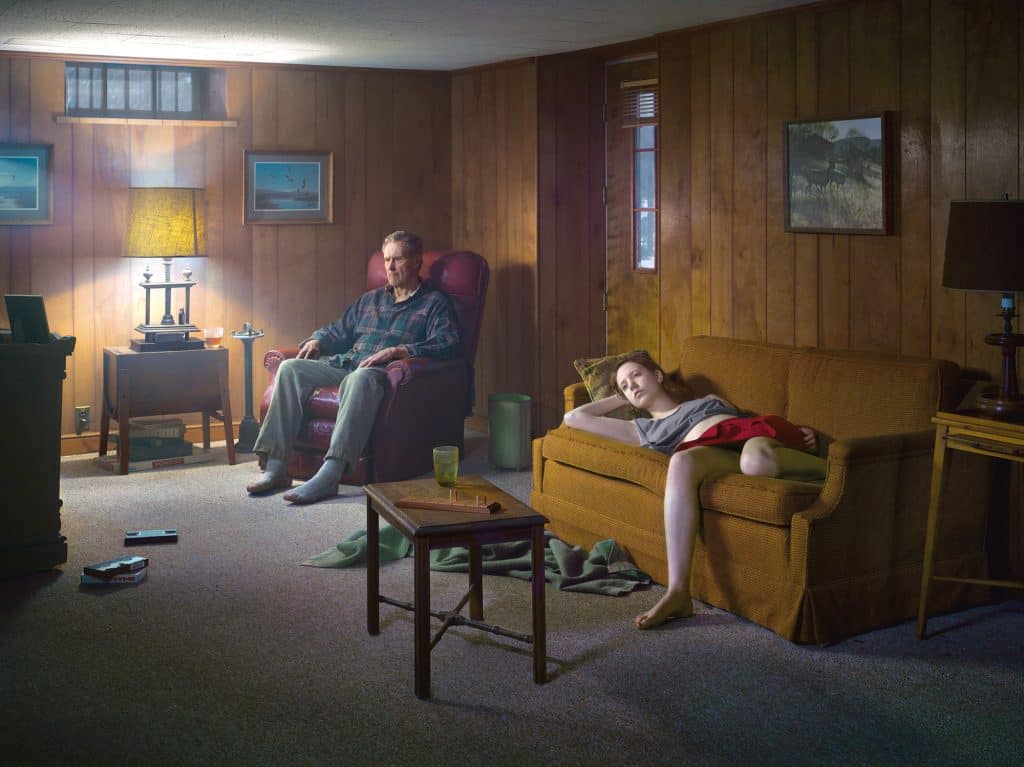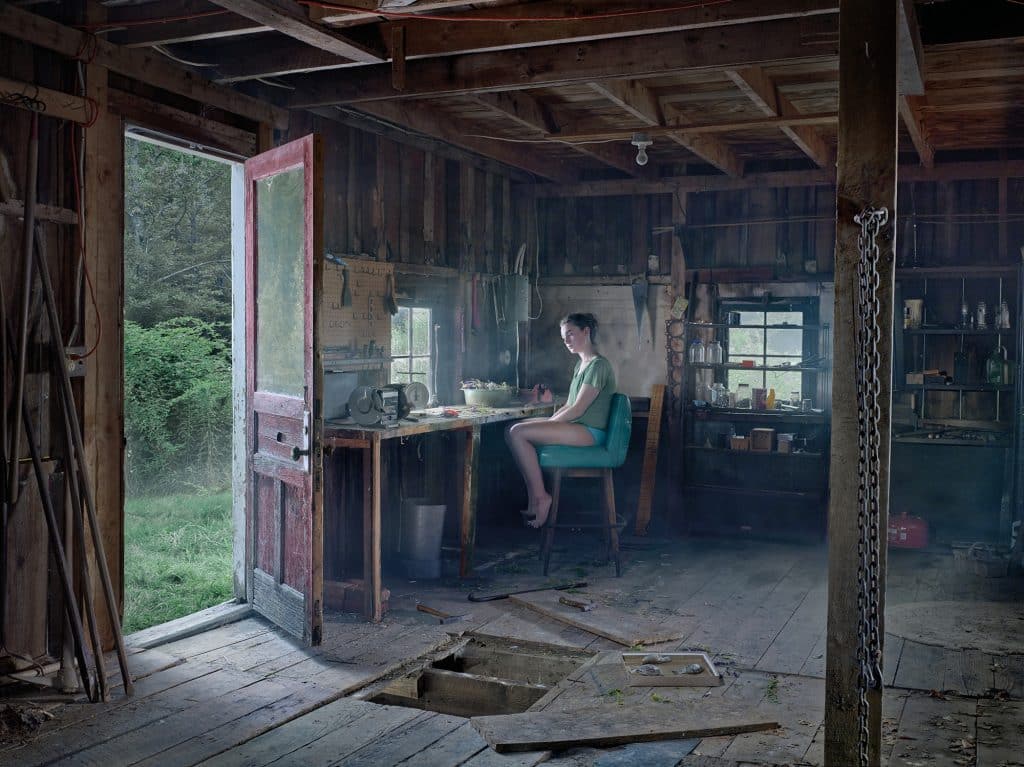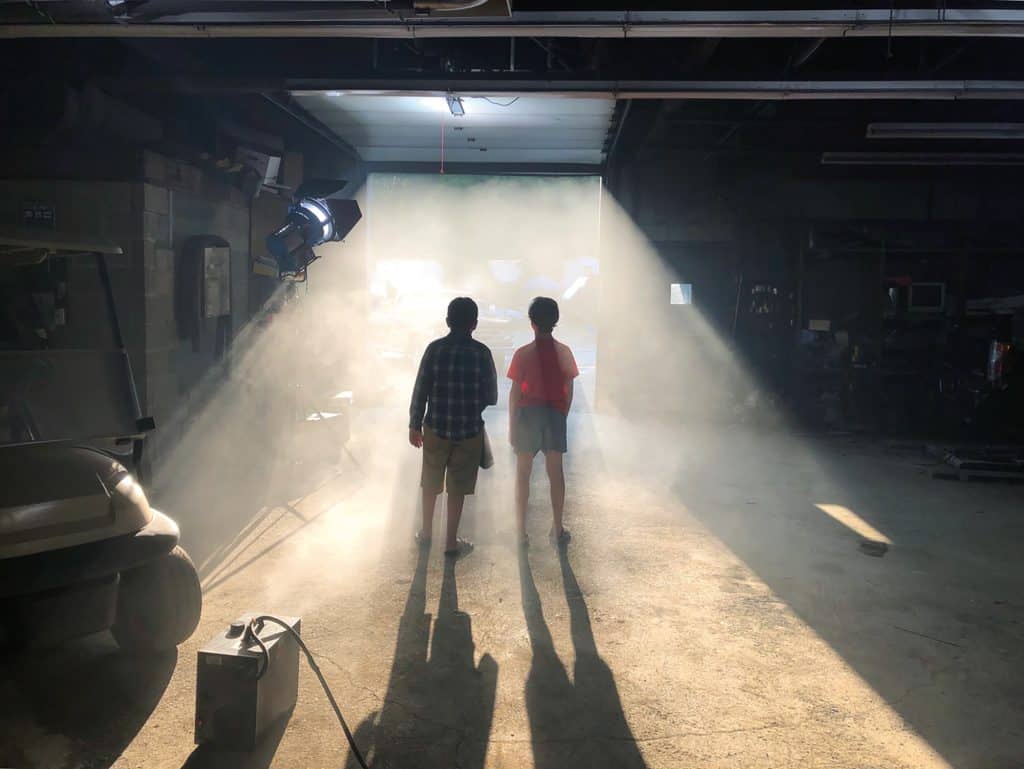
All the world may be a stage but more often than not we experience life as a story without a plot. We play our roles, casting ourselves headfirst along a path that sweeps us across the earth. Time passes, seasons change, we age, and somewhere along the way, we experience a flash of clarity in the haze of existence. It is here in these quiet, tender moments of reflection and repose that American photographer Gregory Crewdson crafts extraordinary scenes of melancholy and mystery.
In the new book Alone Street, Crewdson brings together works from two major series, “Cathedral of the Pines” and “An Eclipse of Moths”, which offer a cinematic view of small-town New England in the post-industrial age. Produced with a film crew, Crewdson’s large-scale photographs take on the cinematic qualities of a film still removed from its narrative. Without context to guide us, our imaginations leap to fill in the blanks, seeking to explain and understand what we see.
Although staged, the emotional intensity of Crewdson’s photographs is palpable as scenes of everyday life take on a theatrical sense of drama, pathos, and poignancy. Like painter Edward Hopper, photographer Walker Evans, filmmaker David Lynch, and novelist Raymond Carver, Crewdson transforms the familiar iconography of American life into a work of art. Filled with ambiguity, a subtle sense of anxiety pervades the beautiful scene, bringing to mind the words of fellow New Englander, Henry David Thoreau, who wrote, “The mass of men lead lives of quiet desperation.”
Photographed on the outskirts of Pittsfield, Massachusetts, just 20 miles from Crewdson’s home. An Eclipse of Moths offers a selection of painterly scenes that suggest the sad truth that lies at the core of the American Dream. The beauty of the landscape is fraught with sorrow and neglect, as lone figures move like sleepwalkers trying to maintain the illusion of normalcy. Crewdson’s photographs are majestic monuments to the intimacy and vulnerability of feeling alone in the world. For all that “progress” has wrought, many of us are truly on our own.
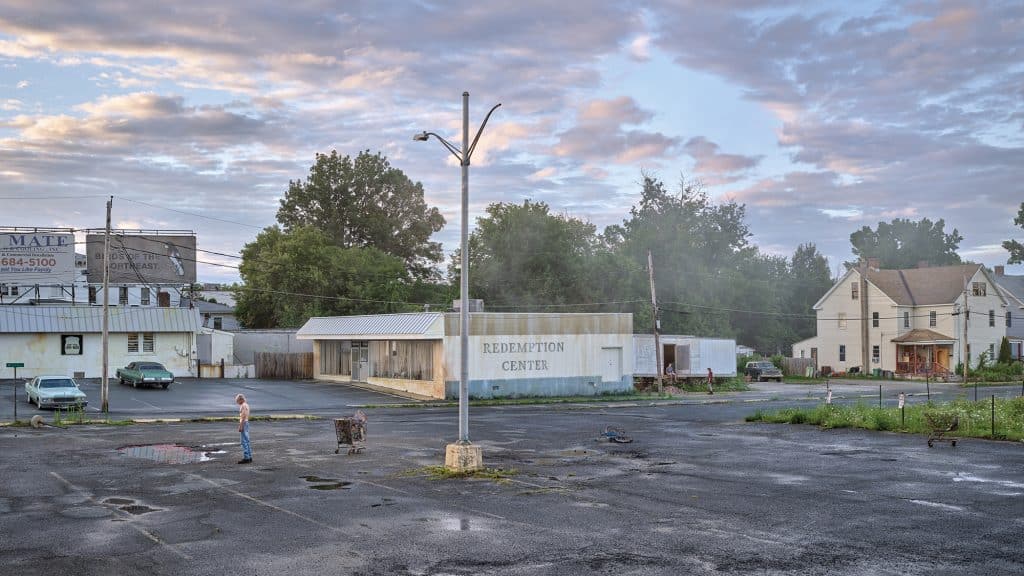
One Life to Live
“I’ve always said that every artist has one central story to tell,” Gregory Crewdson tells actor Cate Blanchett in the preface to Alone Street. “And this story emerges when you come of age as a young artist in your twenties. And that’s when you kind of define your position, you define who you love, what other artists you love, which ones you don’t. You define what movies you respond to, what artists you respond to, what are your arguments, you know, what are the things that drive you?”
For Crewdson, the answer lies in the shadowy valleys rather than the sunny pinnacles of life. Here in the quiet stillness, spirit reveals itself not as a showy spectacle but as something we carry with us all the time. The photograph becomes a space to negotiate the obsessions that drive him to create, to examine and consider states of being that both invite and resist interpretation.
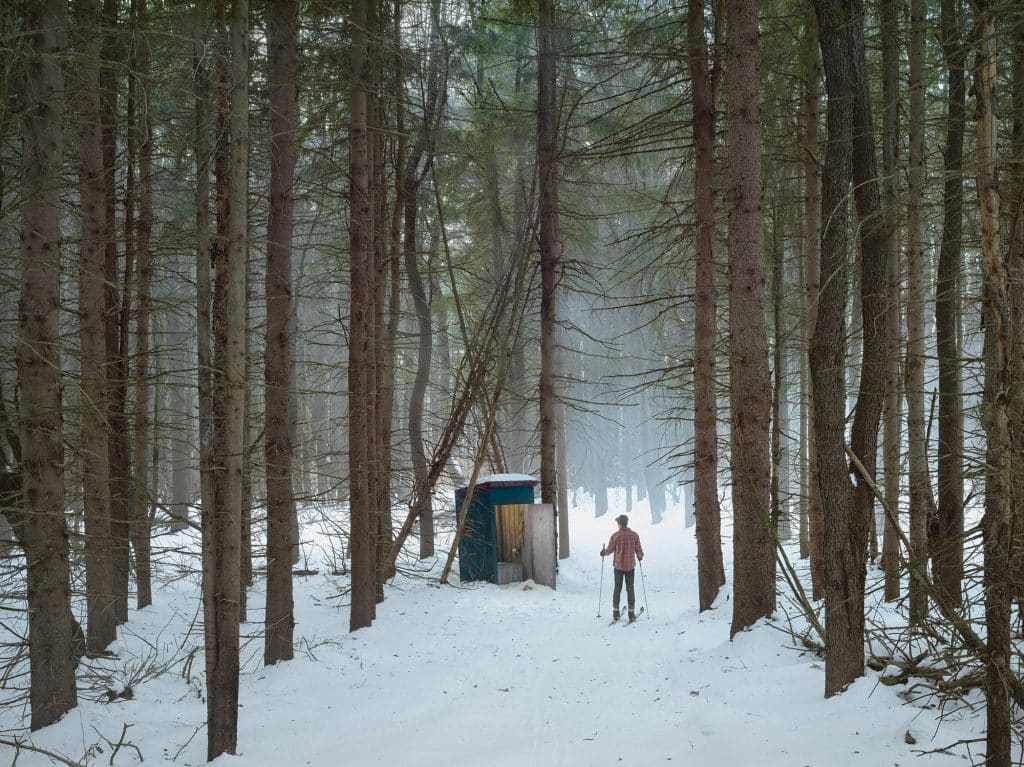
In his conversation with Blanchett, Crewdson explains that in one way or another we revisit this foundation time and again to confront, challenge, and reinvent your desires, obsessions, and fears through the creation of art. He observes, “You can do whatever you can to push yourself forward, but you still can’t get away from yourself as an artist.”
Because no matter where you go, there you are.
Gregory Crewdson: Alone Street is published by Aperture, $65.00.

